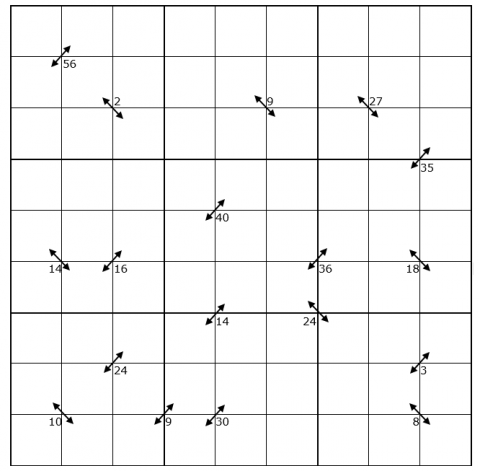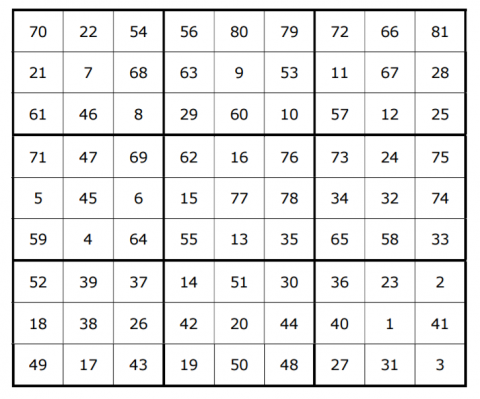Diagonal product Sudoku
Given the products of diagonally opposite cells - can you complete this Sudoku?
Problem
Produced by Henry Kwok
Image

The Basic Rules of Diagonal Product Sudoku
Like a conventional Sudoku, this Sudoku has two basic rules:
1. Each column, row and 3x3 subgrid must have the numbers 1 to 9.
2. No column, row or subgrid can have two cells with the same number.
The puzzle can be solved with the help of clue-numbers which are small numbers written next to the arrows on the intersections between cells.
Each clue-number is the product of the two digits in the two cells that are diagonally adjacent to each other. The position of each pair of diagonally adjacent squares is indicated by the arrows.
For example, 24 in the bottom left box means that the possible pairs of numbers for the cells indicated by the arrow are either 3 and 8, 8 and 3, 4 and 6, or 6 and 4.
1. Each column, row and 3x3 subgrid must have the numbers 1 to 9.
2. No column, row or subgrid can have two cells with the same number.
The puzzle can be solved with the help of clue-numbers which are small numbers written next to the arrows on the intersections between cells.
Each clue-number is the product of the two digits in the two cells that are diagonally adjacent to each other. The position of each pair of diagonally adjacent squares is indicated by the arrows.
For example, 24 in the bottom left box means that the possible pairs of numbers for the cells indicated by the arrow are either 3 and 8, 8 and 3, 4 and 6, or 6 and 4.
Getting Started
In the sixth row, two arrows are pointing at the second cell. Which numbers satisfy both arrows?
Alison and Charlie kept a record of the order in which they filled the Sudoku.
They filled the cell marked 1 first, then the cell marked 2, then the cell marked 3...
Image

You might like to retrace their route to fill in the cells in the same order, though this is just one possible route through the problem.
You can print their journey here
Student Solutions
Image
